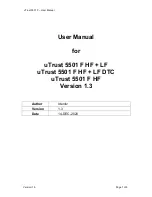
122
RAID 1
RAID 1 is also known as “disk mirroring”; data written on one disk drive is simultaneously written to another disk
drive. Read performance will be enhanced if the array controller can, in parallel, access both members of a mirrored
pair. During writes, there will be a minor performance penalty when compared to writing to a single disk. If one
drive fails, all data (and software applications) are preserved on the other drive. RAID 1 offers extremely high data
reliability, but at the cost of doubling the required data storage capacity.
RAID 10(1E)
RAID 10(1E) is a combination of RAID 0 and RAID 1, combing stripping with disk mirroring. RAID Level 10 combines
the fast performance of Level 0 with the data redundancy of level 1. In this configuration, data is distributed across
several disk drives, similar to Level 0, which are then duplicated to another set of drive for data protection. RAID 10
has been traditionally implemented using an even number of disks, some hybrids can use an odd number of disks as
well. Illustration is an example of a hybrid RAID 10(1E) array comprised of five disks; A, B, C, D and E. In this
configuration, each strip is mirrored on an adjacent disk with wrap-around. Sans Digital RAID 10 offers a little more
flexibility in choosing the number of disks that can be used to constitute an array. The number can be even or odd.
Summary of Contents for ES208X12HP
Page 1: ......




































